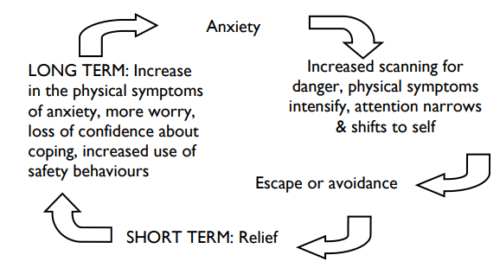The link between stress and anxiety
Stress is a big topic these days, and one way or another we all feel stressed and anxious on many different levels. It’s not uncommon to feel anxious when you make an important decision or when you’re faced with a problem at work, when you have a test at school or when something out of the ordinary happens and you become nervous. It’s a typical reaction of your body. This reaction, however, becomes a disorder when it impacts on your daily activities and stops you from performing your duties, either at work, at home or in other environments.
People that have anxiety as a disorder struggle with worry and fear which becomes overwhelming and disabling. Just from simply perceiving a small situation as life-threatening, for people dealing with anxiety the whole situation escalates and they start shaking, they get panicked, heart palpitations, nausea, muscle tension, dry mouth and so on. These are some of the most common symptoms associated with anxiety.
There is a lot of debate regarding what causes anxiety but one thing is for sure: it is not the result of personal weakness, a character flaw or poor upbringing. Some professionals say the brain circuits that regulate fear and other emotion might not function properly and due to that you get to become anxious. These circuits might be disturbed by severe or long-lasting stress which affects the way the nerve cells send information from one region of the brain to another.
The vicious cycle of stress and anxiety
Overall, our brain is influenced by the way we perceive situations and assess them as being threatening or not. If I perceive something as being threatening to my wellbeing, my body will react according to that information and will try to find different solutions to help me escape the situation that comes across as threatening. And it all goes into a vicious cycle: the more you avoid the situation, the more anxious you become, and overtime that will translate into becoming anxious at just the thought of being in that situation.
It looks something like this*:

Anxiety -> Increased scanning for danger, physical symptoms intensify, attention narrows & shifts to self -> Escape or avoidance -> SHORT TERM: Relief -> LONG TERM: Increase in the physical symptoms of anxiety, more worry, loss of confidence about coping, increased use of safety behaviours. (See original here)
And this process goes on and on until it becomes stronger and it stops you from going to different places or seeing different people.
To reverse the vicious cycle and turn it into a positive one you have to take things step by step and face the fears you have. It is not recommended you go straight into it all by yourself, therefore seeking professional help from a therapist is highly recommended. There are different techniques you can learn like breathing and rational thinking, which will help you assess reality in a clearer and logical way. I’ll talk about the positive cycle in my next chapter and how to cope with anxiety.
Get a 15-minute telephone introductory session free of charge to discuss therapy options and to discuss what kind of counselling service is right for you.
Make your next step an get in touch today. Allow me to help you through this journey in your life.